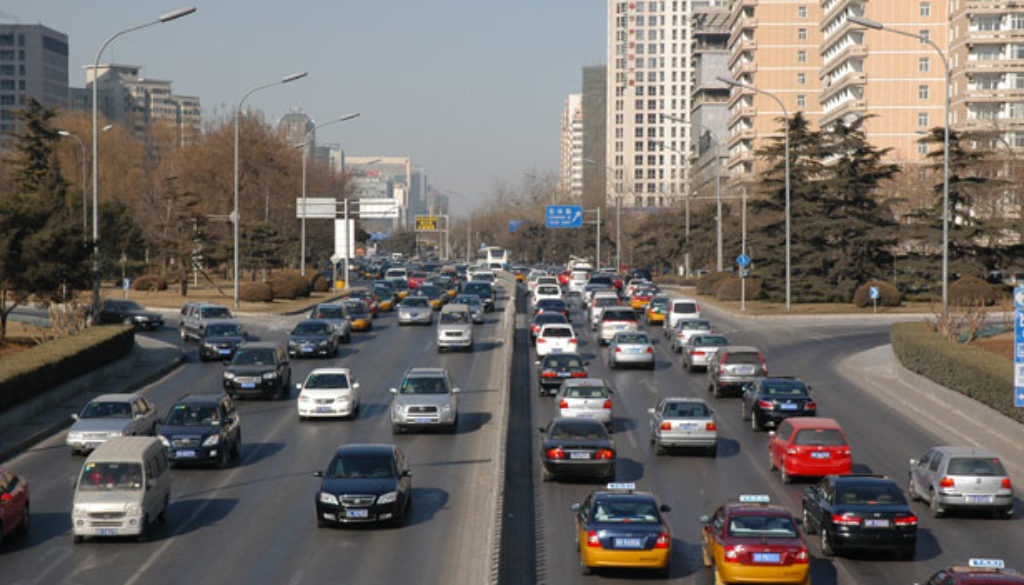Clean Cars in 2016: Building on Progress Toward Clean Air
By Luke Tonachel, Natural Resources Defense Council
The drive to put cleaner vehicles on the road—and reduce climate-altering pollution and save drivers money—made significant gains in 2016.
New cars achieved record high fuel economy. New carbon pollution and fuel efficiency standards were put in place for heavy trucks, a large source of vehicle emissions. And efforts to increase the use of electric vehicles gained ground.
The gains are another signal of strong U.S. clean energy momentum that includes better efficiency in buildings and rapidly expanding renewable power.
But with this year’s advances to cut transportation carbon pollution comes uncertainty about the future of federal fuel efficiency standards under the new administration. You can be sure we’ll fight to keep them strong.
The progress made on the clean car front shows the value of the standards to our health, environment, economy and security. Consumers are already benefitting and will benefit more as the standards get stronger.
And the public strongly supports standards.
In an NRDC-commissioned poll earlier this year, 95 percent of Americans said they want car makers to keep improving fuel economy for cars and trucks and 79 percent said they want the government to keep increasing fuel efficiency standards. Support for higher fuel efficiency was shared by Democrats (97 percent) and Republicans (93 percent) alike.
Among the biggest achievements this year in the drive for cleaner cars were the records set by new vehicles: a new high for average fuel economy and a new low for carbon emissions.
New vehicles sold in model year 2015 averaged 24.8 miles per gallon, up 28 percent since model year 2004. They emitted an average of 358 grams of carbon dioxide per mile—a new low, and a 22 percent decrease from 2004.

Not only are standards working but automakers exceeded them. The pace of innovation is strong evidence that the 2025 target to nearly double fleetwide average fuel economy and cut emissions in half from 2004 levels–a standard that is projected to save drivers an average of nearly $4,000 over the life of a vehicle–is very achievable.
This year’s progress is significant because transportation accounts for about a third of U.S. greenhouse gas emissions. In a number of states, transportation is the largest source of carbon pollution, ahead of power plants.
Among other achievements this year, the U.S. Environmental Protection Agency and U.S. Department of Transportation finalized new fuel efficiency standards for heavy trucks, including tractor trailers, buses, and delivery vans. They account for about 20 percent of transportation-related carbon pollution.
The standards will reduce fuel use of new heavy trucks by up to 25 percent by 2027. They will, when fully implemented, cut one billion tons of carbon pollution and save vehicle owners about $170 billion in fuel costs. And they will reduce oil consumption by up to two billion barrels over the lifetime of the vehicles sold under the program.
Significant progress also was made this year to promote the use of electric vehicles, including a move in California to deploy the largest network of charging stations.
The California Public Utilities Commission gave the go-ahead for Southern California Edison (SCE) and San Diego Gas & Electric (SDG&E) to install 5,000 charging stations in their service areas and Pacific Gas and Electric (PG&E) to deploy approximately 7,500 in northern and central California.
The moves represented an important step in meeting the state’s goal of deploying infrastructure to support 1 million EVs by 2020.
Oregon passed legislation instructing its Public Utilities Commission to order electric utilities to propose programs and investments to “accelerate transportation electrification.’’ In New Jersey, where transportation is the largest single source of carbon pollution, a new campaign was launched to put more EVs on the road.
And the White House offered up to $4.5 billion in Energy Department loan guarantees to expand the network of charging facilities.
Deploying charging stations beyond single-family homes to sites such as workplaces and multi-family dwellings and alleviating drivers’ “range anxiety” (fear of running out of electricity) is critical to growing the EV market, according to an NRDC report, produced this year which spelled out the opportunities for the electric industry to drive carbon pollution out of the transportation sector.
Enthusiasm for electric vehicles also reached a critical point in 2016, as nearly 400,000 people put down $1,000 deposits for Tesla’s more affordable Model 3 electric car.
In the year ahead, we need to hold firm and resist attempts to weaken our fuel economy standards and continue to work aggressively to grow the EV market.
Clean cars are already cutting harmful pollution, saving drivers money, spurring innovation, creating jobs, and strengthen U.S. energy security.
This is a time to keep stepping on the accelerator, not the brakes.

